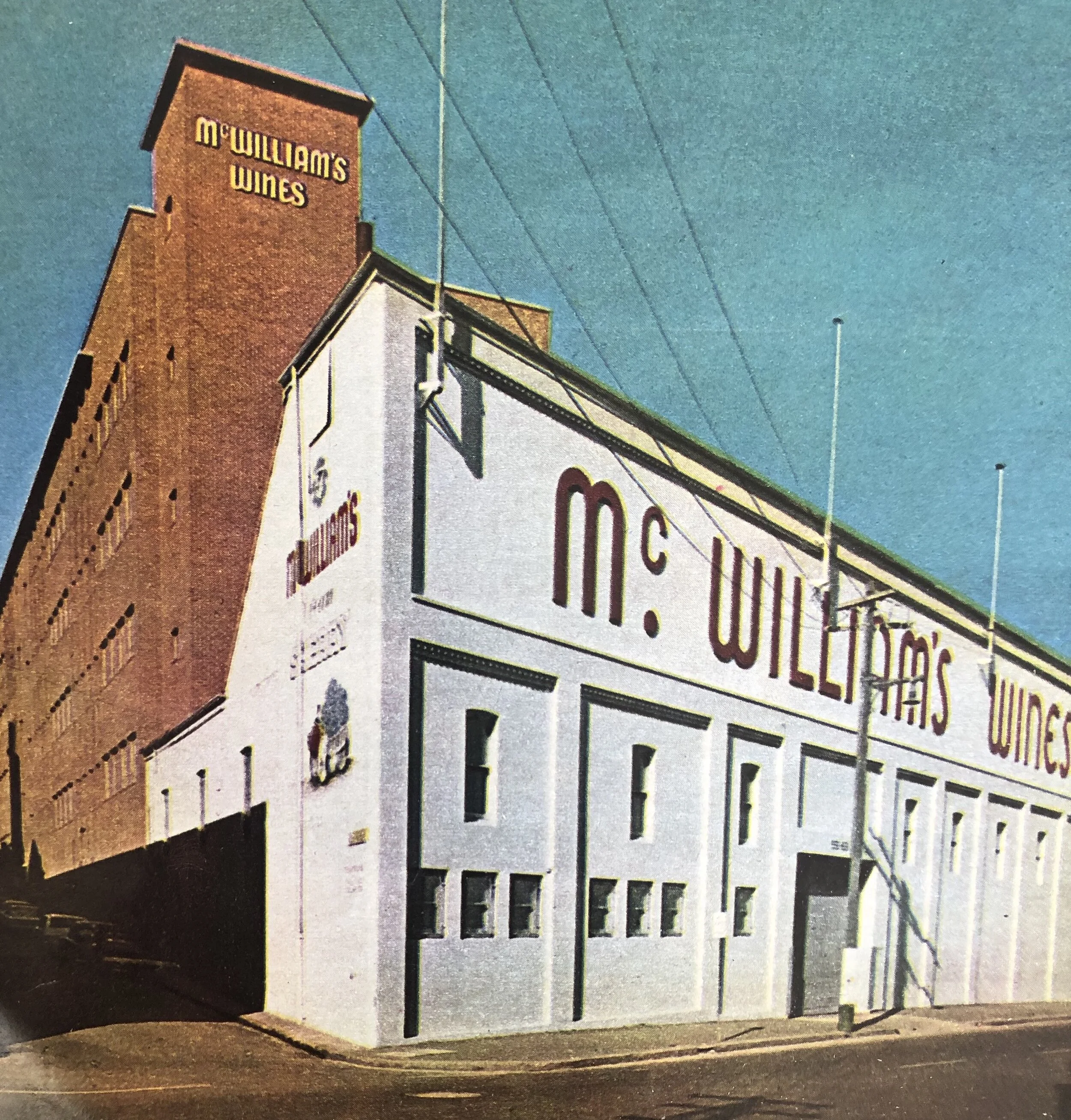Industry > Wine
Wine
The production of wine in heavily-polluted Pyrmont made good sense for one of Australia’s leading vintners. McWilliam’s Wine Company was a family firm, originating in Victoria then expanding into New South Wales. In the family’s third generation, Keith Stewart McWilliam was despatched to Sydney to establish a sales division and a production facility. In 1941 he bought the Pyrmont site in Alberta Street. In 1942 the headquarters moved to 100 Bulwarra Road. Australia was at war and the new premises were declared an essential service: some stills produced ethanol instead of wine, and this was stored in underground tanks, for use as aeroplane fuel. The power supply was switched to the hospital line, which guaranteed power during blackouts. After the war the business boomed. Australians acquired a taste for table wines (rather than fortified wines) and vintners developed export markets. Keith McWilliam was a leader in both fields.
Wine arrived in Pyrmont by rail in very large tankers – along the line which now carries the light rail. At the company’s rail siding, the wine was pumped through stainless steel pipes to tanks below and above ground, until it was bottled. The bottles were then delivered to restaurants and bottle shops by McWilliam’s own trucks. Once the facility was extended and modernised, storage tanks were housed below ground and on the ground floor, together with the despatch department. Bottling was done on the first floor (with access via Ada Place for delivering empty bottles); offices and data processing were also housed on the first floor. Below the computer room was a cask room used for wine tasting and entertaining visitors. The laboratory was accommodated on the second floor. Also there stood ten pressure tanks, which were used for making sparkling wines (by inoculating the tanks with yeast). The third floor was temperature controlled to store and age the bottled wines. The display department and the NSW state branch office were accommodated on the fourth floor.
The fifth floor held the Head Office and Marketing -with a Board Room and Friar Room for corporate tastings. Business was conducted in fine style. Senior management all had secretaries - and a tea lady to wheel a trolley around twice a day. Lunch was served in the Friar Room and wines were “tasted” as business was conducted. This may be the source of the tradition of the Long Lunch.
During the 1980s McWilliam’s moved much of its operation out of Pyrmont to Chullora, and then to Hanwood in the 2010s. The Pyrmont facilities were sold in 1990 and redeveloped in 2003. In 2020 the company itself went into voluntary administration, and has now passed out of the family’s hands, although McWilliam’s Wines retained an office in Murray Street from 2016 until 2020.


